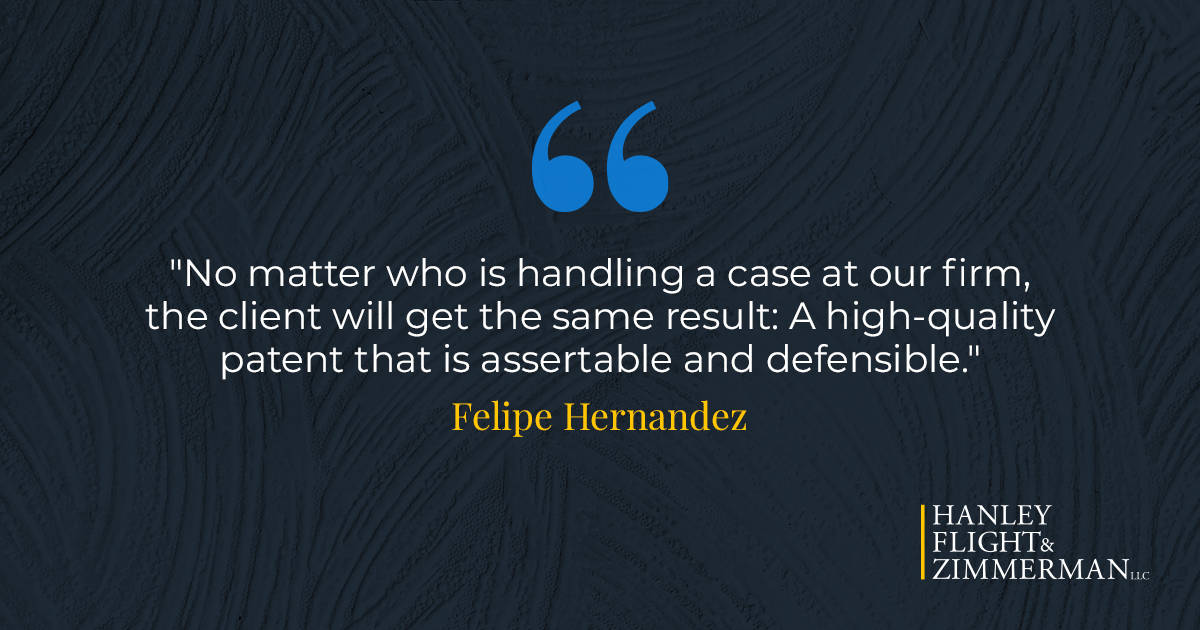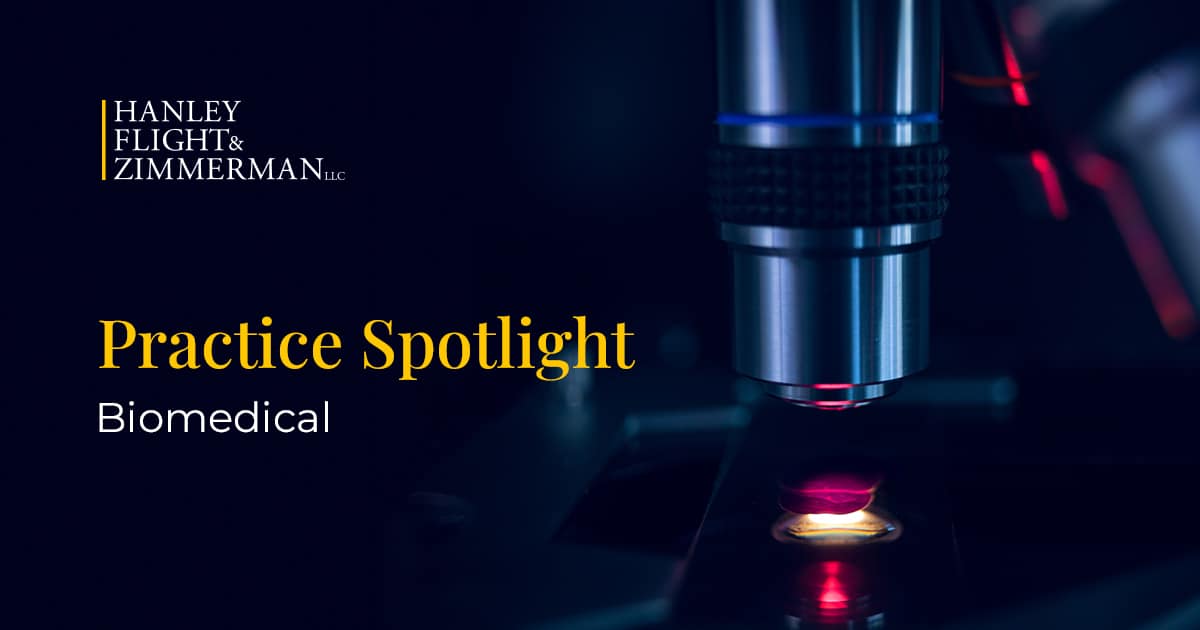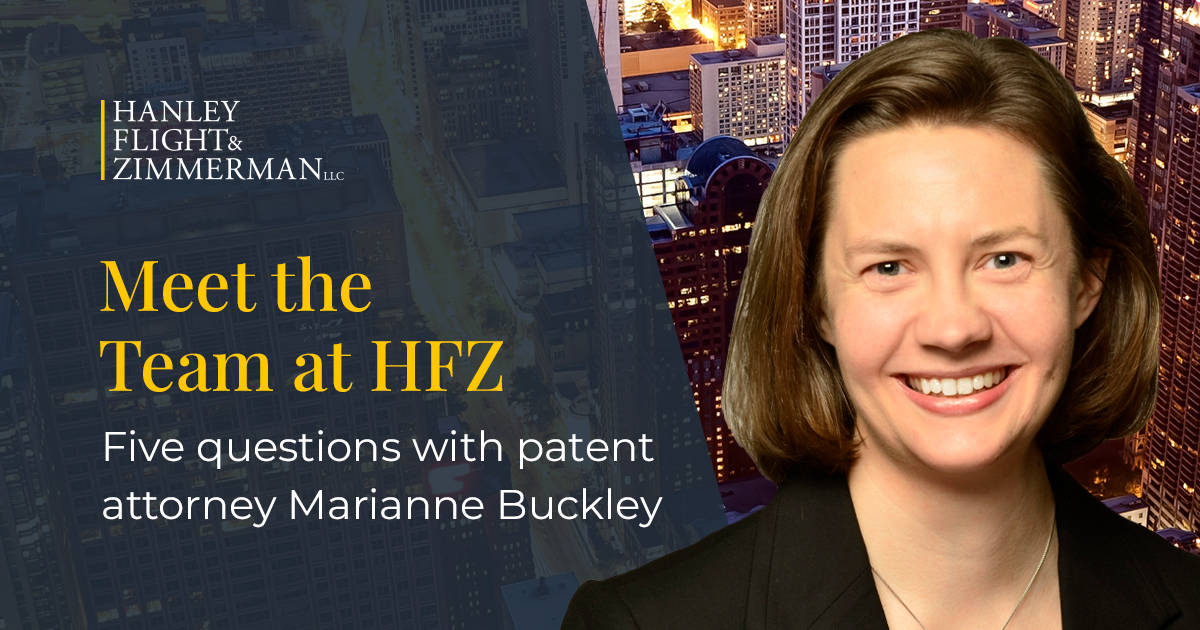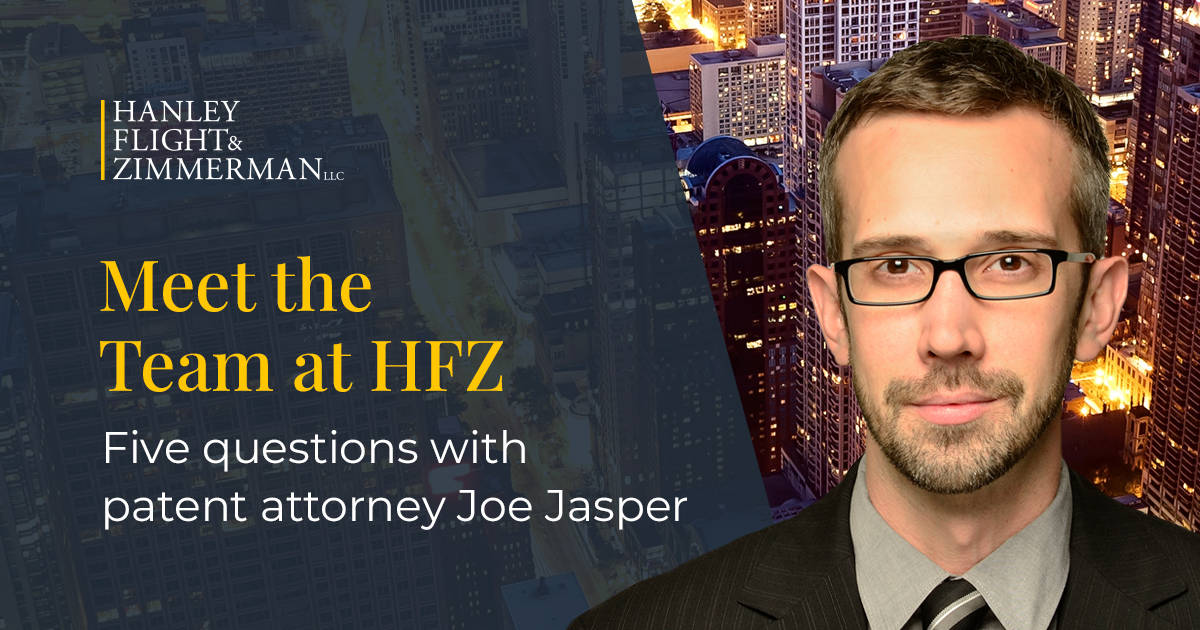Hanley Flight & Zimmerman is dedicated to securing the best possible patent protection for its clients.
One of the ways HFZ achieves that goal is by drafting forward-looking patent applications that will withstand potential litigation and protect clients from competitors.
This strategy is instilled into everyone at the firm who works on a patent application, from paralegals and assistants, to patent engineers and agents, and up to the patent attorneys.
“No matter who is handling a case at our firm, the client will get the same result: A high-quality patent that is assertable and defensible,” said Felipe Hernandez, an HFZ attorney who has been with the firm since 2003.
He explained how HFZ’s attorneys add layers of protection to their clients’ patent applications in three ways.
- They have the expertise and technical knowledge to identify multiple innovations in a single invention disclosure, protecting against derivative products that may be developed by competitors.
- They thoughtfully write patent applications so that they are easily understood by a judge and jury and so that litigators have ammunition to defend the patents being challenged.
- They argue with care, precision, and persuasiveness: Carefully craft statements before the U.S. Patent and Trademark Office that will contribute positively to a patent’s enforceability.
Keeping competitors at bay
The process starts with HFZ reviewing a client’s invention disclosure.
“One of the values that we bring to our clients is being able to identify not only an invention, but sometimes there are multiple inventions. And the inventor just doesn’t realize it,” Felipe said.
“And so we explain to the client that this is a single disclosure form, but actually you have a number of valuable innovations here.”
It could be advantageous for a company to patent specific pieces of a system as well as the group as a whole because HFZ’s attorneys, with their experience and foresight, could see individual pieces of the invention being developed by a competitor in the future.
“For the inventor, they think they’ve created a three-tiered system with Blocks A, B, and C forming a superblock, but as a patent attorney, I could see where a competitor might only develop Block B without the superblock and without Block C,” Felipe said. “And so why don’t we write some claims that our client can use to protect just Block B by itself?”
This strategy is also valuable for future litigation. If a client sees a competitor has developed Block B but the client only patented the system as a whole, there may be little, if any, recourse.
“Let’s give them the broadest protection that they can use,” Felipe said. “If you understand the market is going in a certain direction, we can work with inventors to make sure the resulting patent application covers future innovations.”
Telling an invention’s story
HFZ’s attorneys speak to multiple audiences in patent applications. They fulfill the client’s needs: choosing the right words to specifically describe their invention to explain it to the public, how the technology may be used in the real world in alignment with various business strategies, why the invention is non-obvious, and why the application complies with all aspects of the law and should be approved by the USPTO.
But the patent application is also drafted to speak to critical audiences if the patent is enforced in court: The judge and jury. This is how HFZ makes patents litigation-ready.
“We draft patent applications so that they tell a story no matter the level of the reader’s technical background,” Felipe said, using the example of a smartphone innovation.
“If a patent makes it to trial, you want to give the trial attorney the ability to hold up a phone and say this invention is within the phone. And when the jury looks at the patent application that’s been written up, they understand what the invention is about.
“Here’s the overarching story, the scope or the context of the invention, then we start focusing on more granular details. Maybe the innovation conserves battery power, decreases processing resources, or improves other functionality of particular components.”
Arguing with a purpose
Just as HFZ takes care to write patent applications, they are mindful of how they speak to the patent examiner when arguing for approval during the patent procurement phase.
“The job of the examiners at the USPTO is to protect the public from patents that are too broad. Our job is to protect our clients’ rights to get patent protection that’s sufficiently broad, which goes right up to the prior art line,” Felipe said.
“Here’s the prior art. Here’s our client’s invention. If we can close that gap and you can see no light between, then we’ve done a great job for our client.”
But there’s a delicate balance. If a prosecuting attorney unartfully characterizes the focus of the invention to the examiner, that could be used during litigation to narrow the scope of patent protection beyond what is required to distinguish the prior art. If the prosecuting attorney doesn’t argue strongly enough, some aspects of the innovation might not get approved by the patent examiner and the scope of protection will be lessened.
How HFZ can protect your innovations
Felipe says clients put their full trust in HFZ after seeing the firm’s patent procurement process in motion.
“After working with us, they bring us closer into their operation because they see the quality in the work we provide,” he said. “It’s a rewarding feeling to earn that trust from our clients.”




